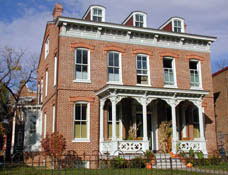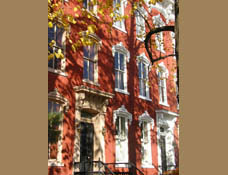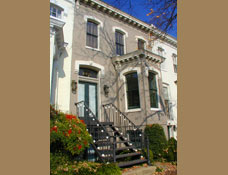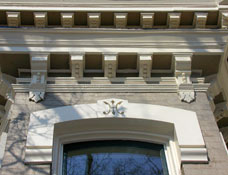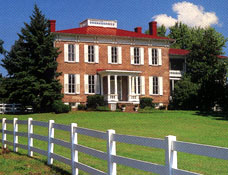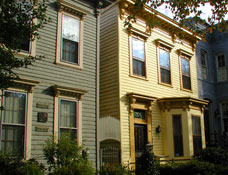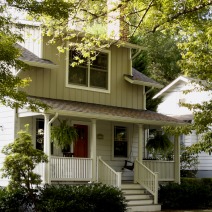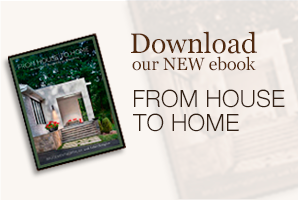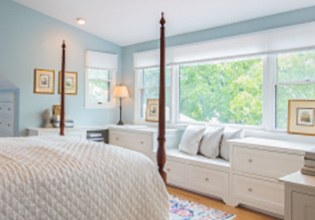A daring departure from the cold and formal architecture of earlier decades, Italianate style brought a passion for freedom to 19th-century building design. Architects took inspiration from Mediterranean farmhouses with their characteristic towers and informal details, embracing this new approach and injecting it with an all-American flair to form something unique by the 1930s. By doing so, they could better express themselves artistically, allowing their full creativity to reign as they designed buildings never seen before.
From Italianate styles to more modern takes on traditional designs, our portfolio is full of stunning transformations that will inspire your next project.
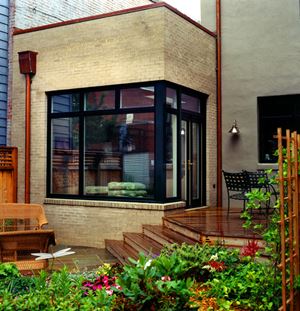
Characteristics
Italianate architecture is characterized by its two-story buildings, although variations include three-story homes with towers and cupolas and urban townhouses. Stand-alone houses in this style can be divided into six categories: a box with a hip roof, a box with a centered gable, an L or U plan, an L plan with a tower, and a front gable. Regarding design elements, Italianate townhouses are recognized by their wide projecting cornices with heavy brackets and ornate windows, porches, and doorways. Many American Italianate buildings combine aspects from both rural models and formal renaissance townhouses.
Materials
Italianate homes were a beautiful sight, with brick and wood clapboard being the popular materials used for construction. The wooden ornamentation was usually adorned, but some brick dwellings had remarkable cast-iron window hoods adding an extra layer of style.
Roofs
Italianate roofs tend to have a low pitch, sometimes featuring a square cupola on the top. The cornices of these buildings are often characterized by projecting eaves with large brackets in various shapes and spacing. These brackets may be arranged individually or in pairs and are typically adorned with wide decorative bands and sometimes further embellished with panel moldings. Overall, the brackets and cornices of Italianate buildings are an essential part of their architectural style and are meant to be highly ornamental.
Windows
Italianate windows were the era’s signature, featuring one-over-one or two-over-two glazing and exuberant trims such as U-shaped crowns with brackets and pedimented crowns decorated with hoods. The style also popularized arched and curved frames in America — bringing a touch of Italian flair to many homes.
Entrance
Italianate doors were often paired or single and were known for their large, elaborate hoods supported by brackets. They were also notable for being the first style to feature large glass panes in the doors rather than small panes in sidelights. Italianate porches were generally smaller and less ornately decorated than other Victorian styles, typically only one story. This style’s most common type of porch column was a square post with beveled or chamfered corners, usually measuring 6 inches in width. Overall, the doors and porches of Italianate homes were notable for their attention to detail and ornate design elements.
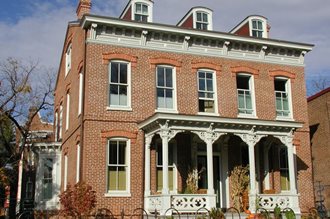
Italianate Remodeling Services
When it comes to your historic home, trust Wentworth with the remodel. We blend timeless character and modern sensibility to bring any Italianate home in the DC metro area into a new era of style while preserving its original charm. Our period home renovations are ideal for anyone looking to update their interior or facade without sacrificing beauty.
Our expertise in remodeling solutions includes:
- Italianate home remodeling: Our remodeling services are top-notch and sure to exceed all expectations if you dream of a warm, inviting kitchen or functional bathroom to bring life back into your Italianate home.
- Italianate home additions: Wentworth can help you expand your home in a way that complements its original architecture. We are dedicated to completing an addition or renovation project which looks like it’s always been part of the house — no matter how ambitious.
- Italianate interior reconfigurations: Turn back the clock but move ahead in style. Let us help you preserve your Italianate home while refreshing its outdated floor plan for smoother traffic flow. Enjoy life at home like never before with an upgrade to meet modern standards.
- Italianate detailing: Revive your home with the help of our experienced craftsmen! We can bring an aged space back to life with precise attention to accurate historical detailing, from railings and millwork down to the plaster.
- Italianate interior design services: Transform your Italianate home into a masterpiece with Wentworth’s interior design services. Our team of professional designers will help you choose the right furniture, paint colors, and accessories to create an elegant look that celebrates a rich history.
- Italianate facade enhancements: We believe in embracing the true beauty of Italianate architecture. We take pride in using high-quality materials that are entirely authentic and reminiscent of those used by original builders — helping you capture timeless elegance while increasing your home’s curb appeal.
Schedule a Consultation With Wentworth
Wentworth stands out from its competitors regarding remodeling services in the Washington, DC, metro area. What makes us so unique? A family-like atmosphere with a team passionate about design and construction, each working together for your 100% satisfaction — plus an exclusive architect-led design service bringing comprehensive yet cost-effective solutions.
Call (240) 383-1226 or contact us to learn more about our Italianate home services.


